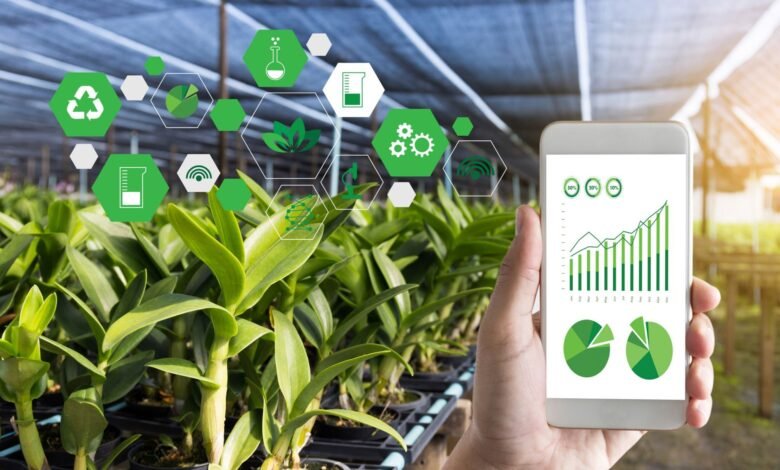
Smart agriculture, an innovative approach fueled by technological advancements, has transformed traditional farming into a tech-driven, data-intensive industry. This article explores the evolution of smart agriculture, its key components, and the profound impact it has on enhancing efficiency, sustainability, and productivity in the agricultural sector.
Defining Smart Agriculture
Smart agriculture, also known as precision agriculture, involves the integration of technology to optimize various aspects of farming. It leverages data, sensors, connectivity, and automation to make informed decisions and streamline agricultural processes.
Technological Enablers
The evolution of smart agriculture has been made possible by the convergence of technologies such as the Internet of Things (IoT), Artificial Intelligence (AI), data analytics, and robotics. These technologies work in synergy to collect, analyze, and act upon real-time data from agricultural operations.
IoT Sensors and Connectivity
IoT sensors deployed across fields gather data on soil moisture, temperature, crop health, and more. This data is transmitted in real time, providing farmers with valuable insights to make informed decisions about irrigation, fertilization, and pest control.
Drones and Satellites
Drones and satellites offer a bird’s-eye view of the entire farm, capturing high-resolution images and data. This aerial perspective aids in monitoring crop health, identifying areas of concern, and optimizing resource allocation.
Precision Farming and Automation
Precision farming involves using technology to precisely manage field variability in crops. Automation, including autonomous tractors and harvesters, contributes to efficient and resource-conscious farming, reducing labor and enhancing overall productivity. By minimizing the use of resources and reducing environmental impact, smart agriculture promotes sustainability. Precision farming practices contribute to soil health, water conservation, and the overall environmental stewardship of agricultural lands.
Increased Efficiency
Smart agriculture optimizes resource use by delivering precise amounts of water, fertilizers, and pesticides where and when they are needed. This targeted approach minimizes waste and maximizes efficiency in agricultural practices.
Sustainability and Environmental Stewardship
By minimizing the use of resources and reducing environmental impact, smart agriculture promotes sustainability. Precision farming practices contribute to soil health, water conservation, and the overall environmental stewardship of agricultural lands.
Enhanced Crop Yield and Quality
The data-driven insights provided by smart agriculture empower farmers to make decisions that lead to healthier crops and increased yields. By identifying and addressing issues early, farmers can optimize conditions for plant growth and maximize the quality of harvests.The evolution of smart agriculture represents a paradigm shift in the way we approach farming. By harnessing the power of technology, farmers can make more informed decisions, minimize environmental impact, and ensure sustainable and productive agricultural practices. As the journey of smart agriculture continues, ongoing advancements and collaborative efforts will play a pivotal role in shaping the future of food production.
Read More:
Technological Adoption Barriers
The initial investment and learning curve associated with adopting smart agriculture technologies can be barriers for some farmers. Overcoming these challenges requires awareness, training, and support to ensure widespread adoption.
Data Security and Privacy Concerns
The collection and use of extensive data in smart agriculture raise concerns about data security and privacy. Implementing robust cybersecurity measures and transparent data management practices are crucial to addressing these concerns.
Integration of Advanced AI and Machine Learning
The future of smart agriculture involves the deeper integration of advanced AI and machine learning algorithms. These technologies will further enhance predictive capabilities, allowing farmers to anticipate challenges and optimize farming practices with greater precision. The evolution of smart agriculture represents a paradigm shift in the way we approach farming. By harnessing the power of technology, farmers can make more informed decisions, minimize environmental impact, and ensure sustainable and productive agricultural practices. As the journey of smart agriculture continues, ongoing advancements and collaborative efforts will play a pivotal role in shaping the future of food production.
Global Connectivity and Collaboration
Smart agriculture is poised to benefit from global connectivity and collaboration. Sharing insights, best practices, and technological innovations on a global scale can accelerate the development and adoption of smart agriculture practices worldwide.
Conclusion
The evolution of smart agriculture represents a paradigm shift in the way we approach farming. By harnessing the power of technology, farmers can make more informed decisions, minimize environmental impact, and ensure sustainable and productive agricultural practices. As the journey of smart agriculture continues, ongoing advancements and collaborative efforts will play a pivotal role in shaping the future of food production.



